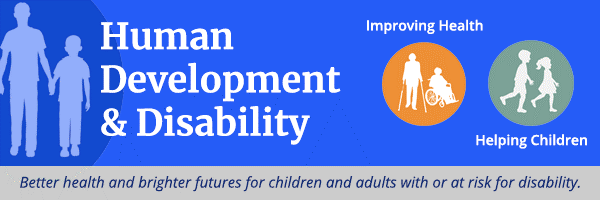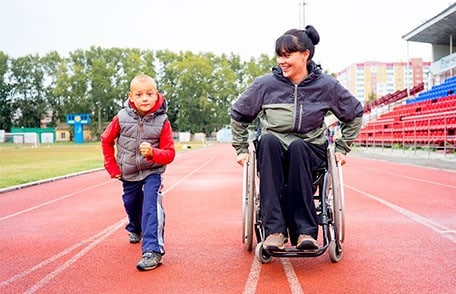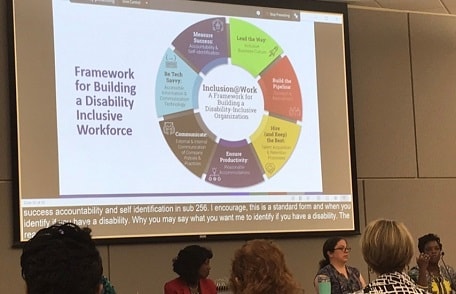DHDD Newsletter - May 2019

A Note from the DHDD Director:
Dear colleagues –
In May we are proud to recognize both Physical Fitness and Sports Month and Children’s Mental Health Awareness Month with our featured articles on CDC’s website (links below). This month, we had the opportunity to share our early childhood and disability inclusion work with partners across multiple disciplines at the 2019 Early Childhood Inclusion Institute where we gained insight into the creative work underway in Head Start classrooms and other early childhood settings that support children with disabilities. We value our cross-sector partnerships and all that we continue to learn from you!
– Dr. Georgina Peacock, Director, DHDD
dhdddirector@cdc.gov
CDC Features – National Physical Fitness and Children’s Mental Health Month

Physical Activity for People with Disabilities
In recognition of National Physical Fitness and Sports Month, NCBDDD DHDD offers tips that people with disabilities can use to find paths to physical activity: https://www.cdc.gov/features/fitness-disabilities/index.html.
Children’s Mental Health: Anxiety and Depression in Children

Anxiety and depression affect many children. In a recent DHDD-authored article published in The Journal of Pediatrics, parent/caregiver reported data from the 2016 National Survey of Children’s Health (NSCH), showed that 7.1% of children aged 3-17 years (approximately 4.4 million) had diagnosed anxiety and 3.2% of children aged 3-17 years (approximately 1.9 million) had diagnosed depression. In addition, an article published in the Journal of Developmental and Behavioral Pediatrics using parent-reported data found that the percent of children aged 6 – 17 years ever having been diagnosed with either anxiety or depression increased from 5.4% in 2003 to 8.4% in 2011-2012. Read more about anxiety and depression in our feature article.
DHDD Participated in Invisible Disabilities Panel Event

The Diversity and Inclusion Councils from CDC’s National Center on Birth Defects and Developmental Disabilities (NCBDDD) and National Center for Injury Prevention and Control (NCIPC) co-sponsored a panel event to educate CDC staff about invisible disabilities and their impact on employees in the workplace, as well as resources and techniques to support staff who self-disclose their disabilities. While some disabilities may seem apparent, many are unseen within the workplace, or deemed “invisible.” Invisible disabilities can include medical conditions that interfere with the usual activities of daily life but are not immediately obvious to others. Some examples of invisible disabilities include multiple sclerosis, lupus, autism, epilepsy, fibromyalgia, arthritis, attention-deficit/hyperactivity disorder, deafness or difficulty hearing, traumatic brain injury, mental illnesses, and other disorders that may not be noticeable to co-workers or supervisors. Learn more about DHDD’s efforts to create greater understanding and inclusion for people with disabilities in the work place and throughout the community.
DHDD Publications
We invite you to read two papers that DHDD published in May:
- Hypertension among people with disabilities. In the American Journal on Intellectual and Developmental Disabilities, DHDD and other CDC researchers utilized data housed at the South Carolina Revenue and Fiscal Affairs Office, Health and Demographic Section (H & D) to look at anti-hypertensive medication adherence among adults with intellectual and developmental disabilities (IDD)external icon.
- Child Emergency Preparedness. In Public Health Reports, DHDD researchers evaluated the use and effectiveness of virtual tabletop exercises (VTTXs) simulating disaster scenarios for pediatricians and public health practitioners as a way to improve emergency-preparedness specific to children’s needsexternal icon.
DHDD’S mission is to lead inclusive programs to optimize the health and development of children and adults with, or at risk for, disabilities.

